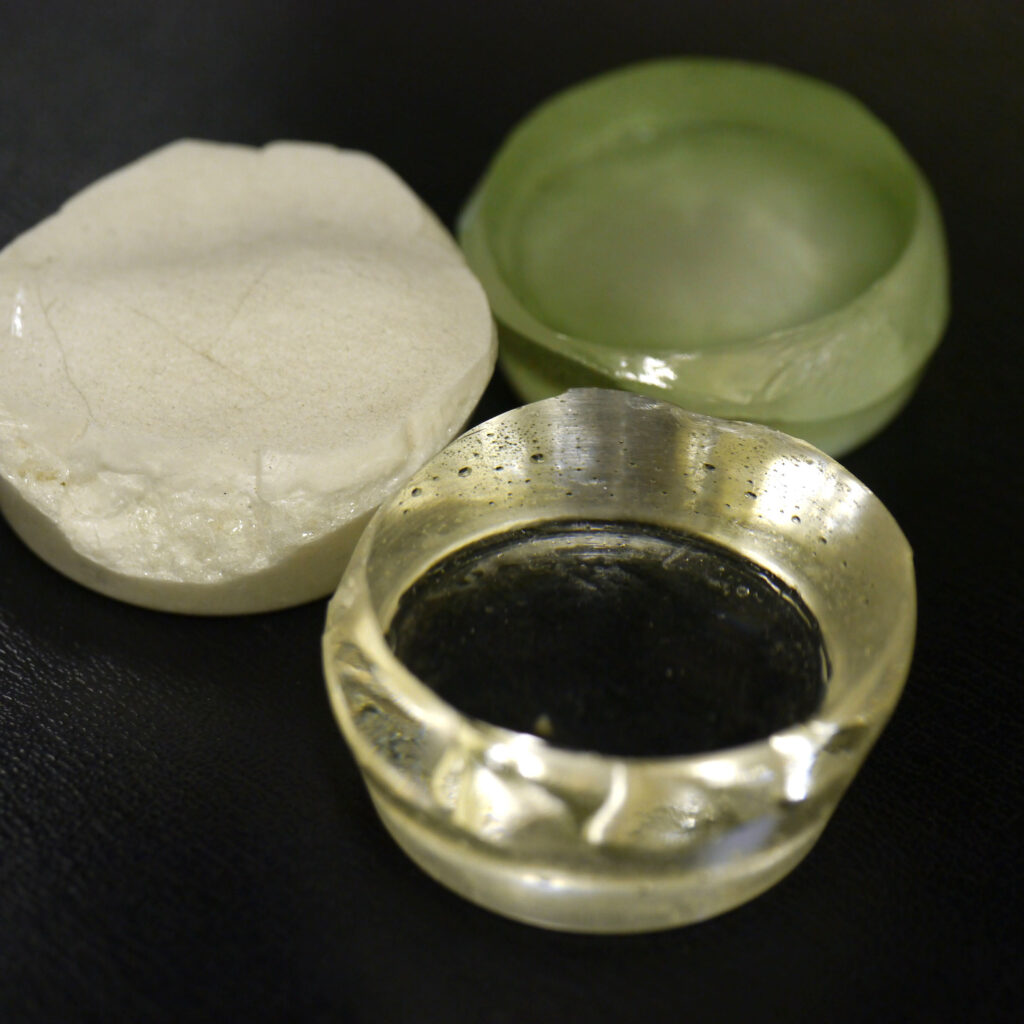New glass is not made in a day

The above photograph shows material melt in a platinum crucible being poured into an experimental sample mold, with the aim to develop a new type of optical glass. The materials used for optical glass are classified according to many properties including optical properties such as refractive index and chromatic dispersion, chemical properties such as surface acid resistance and weather resistance, and thermal and mechanical characteristics that become important for processing. There are more than 200 types of such glass materials. This may seem like a sufficient number for making optical glass, but Cosina never stops experimenting with new types of glass. As the origin of better and improved optical devices, we promote the research and development of new glass materials.

Glass is a mixture of primarily silicon dioxide (silica) and various other materials. In the past, materials of high environmental load such as lead, cadmium and arsenic, were used to enhance performance. But, at present, ecological glass made from alternative materials such as titanium oxide is in demand. In addition, rare metals and rare earth elements such as lanthanum, yttrium, gadolinium and tantalum are selected as effective materials for obtaining specific properties. How should these materials be combined? And, what melting processes do they require? We continue taking on these challenges through various approaches.

Producing optical glass that has new properties presents many challenges. Of course, optical glass must be homogeneous and highly transparent, but, depending on the state of elements that compose optical glass and the movements of molecules, optical glass may be far from the image of general glass. If a small amount of impurity remain in the material, optical glass turns green and black. Also, titanium oxide may turn optical glass yellow. Even though we try to produce new optical glass logically by changing the components based on the periodic table, failure occurs all too frequently. Yet, we still aim to step into areas nobody has ever been before. Without such attitude new discoveries will not be made.